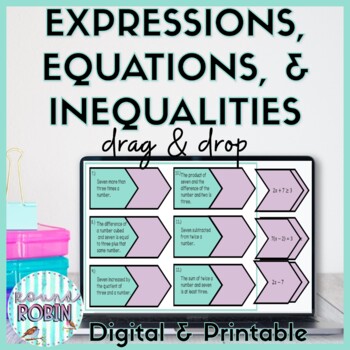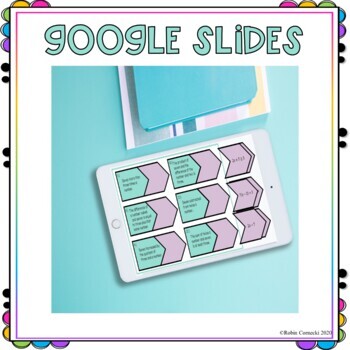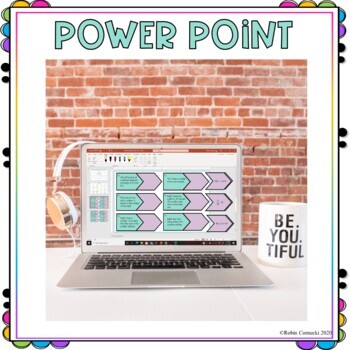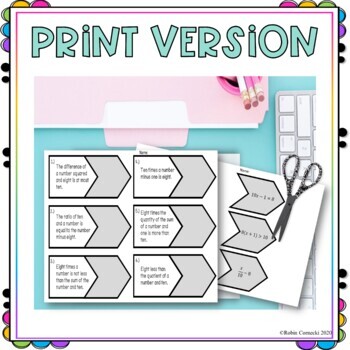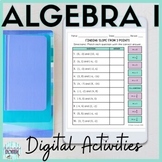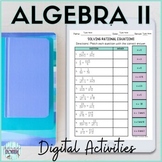Equations, Expressions, and Inequalities Digital Activity

Also included in
- Are you looking for engaging Algebra I Digital Resources for your math classroom? Look no further than with this GROWING BUNDLE of Algebra 1 digital activities resources including activities on Solving Systems of Equations, Solving Multi-Step Equations, Factoring Trinomials, Order of Operations, SimPrice $69.60Original Price $87.00Save $17.40
- Are you looking for Digital Resources for your Algebra 2 classroom? Look no further than with this GROWING BUNDLE of Algebra 2 digital activities resources including activities on Simplifying Rational Expressions, Adding and Subtracting Rational Expressions, Multiplying and Dividing Rational ExpressPrice $62.40Original Price $78.00Save $15.60
Description
Give your Algebra students a fun and engaging way to practice their understanding of Writing Equations, Expression, and Inequalities from verbal expressions with this distance learning review activity. This Distance Learning Equations, Expressions, and Inequalities Drag and Drop Activity includes 24 questions that students can drag and drop the answers to match the question. Students will practice translating from verbal expression to algebraic expressions.
This resource is perfect for Distance Learning (zero prep) or in the classroom. It can be used with Google or Microsoft. When using with Microsoft, go to File -> Download as a Powerpoint.
You must have a free Google account to access the document.
When you purchase, you will receive a PDF containing the link to this file. You will also receive teacher instructions and an answer key.
There are 2 links with this pdf. The first link is the one that I used with my students as an activity during remote learning when we were meeting one on one. The second link I used for a homework assignment for my students. You can also use it as homework and a quiz. Each link contains 4 slides with a total of 12 questions. Altogether you will receive 24 questions for your students to practice.
⭐ These activities can be used digitally or as a hands-on activity with the provided pdf handouts included. Students will need scissors and a glue stick if you decide to use this in your classroom. ⭐
✅Looking to save money with a complete bundle of Algebra I or Algebra II digital activities?
Don't forget to leave a review to earn credit towards future resources at no extra cost to you!
You may also like:
- Rate of Change and Slope: Investigation, Notes, & Practice
- Scientific Notation Bundle
- Distance Learning Sets of Real Numbers Digital Activity
- Distance Learning Exponents and Scientific Notation Digital Activity
Let's be social!

